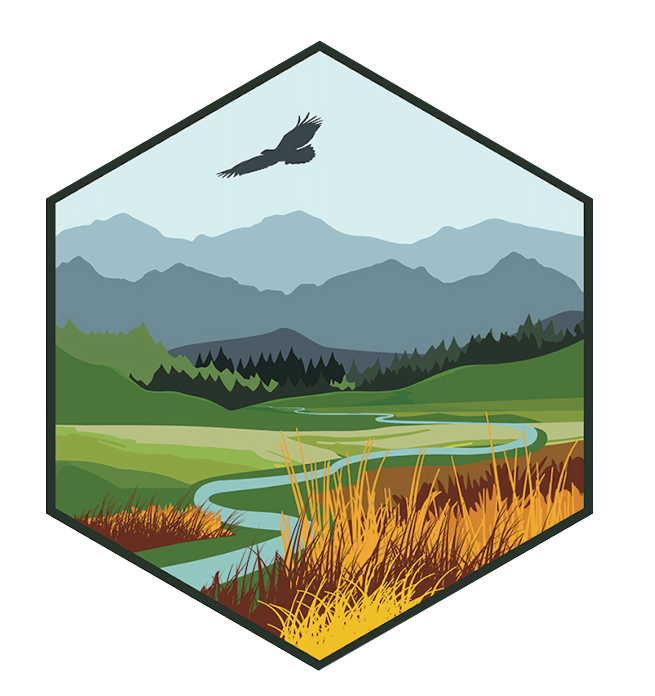The NC CSC has collaborated with the USGS AmericaView program to deploy cameras that will record phenology throughout the region. Although, not all cameras were deployed throught AmericaView, they were deployed at the following sites: Ashland Bottoms, Kansas Bangtail Study Area in Bozeman, Montana Central Plains Experimental Range, Colorado Grand River Grasslands, Iowa Grand Teton National Park National Elk Refuge, Wyoming Nine Mile Prairie, University of Nebraska, Nebraska Oakville Prairie, North Dakota Poudre Learning Center, Colorado Sagebrush Steppe, Wyoming Earth Resources Observation and Science Center, South Dakota
Data Visualization & Tools
In addition to the major projects funded by the North Central Climate Science Center (NC CSC), selected through its solicitation process or the directed funds going to the foundational Science Areas, there remains a need within the north central domain to support work that builds capacity among stakeholders that have been otherwise left out of the major projects funded by the NC CSC. During the course of this project, we focused on stakeholder capacity building by providing regional offerings of climate-related courses for resource managers, supporting tribal college students and deploying technology to better understand how climate impacts living things, and supporting strategic scientific study of the climate/energy/environment nexus in the Missouri River Basin. First, the NC CSC provided climate education opportunities in collaboration with the US Fish and Wildlife Service National Conservation Training Center (NCTC). We offered the NCTC Climate Change Vulnerability Assessment class to managers and students from April 22 - 24, 2014 in Jackson, WY, and from September 30 - October 2, 2014 in La Crosse, WI. Future courses will include Climate Smart Conservation. The NC CSC has also worked with the Indigenous Peoples Climate Change working group to establish an Indigenous Geography Phenology Network by providing support to tribal college students to collect observations of plant and animal life-cycle stages (known as phenology) for culturally significant plants and animals, and uploading these observations to a citizen-science database ( USANPN). In addition, the NC CSC has collaborated with the USGS AmericaView program to deploy cameras that will record phenology throughout the region. Finally, we supported the Intertribal Council On Utility Policy (ICOUP) to formulate a strategic scientific study to understand and demonstrate how climate science can be integrated into resource management decisions, particularly with regard to the climate/energy/environment nexus in the Missouri River Basin.
The Eastern Shoshone and Northern Arapaho Tribes on the Wind River Indian Reservation in Wyoming are preparing for drought and other climate fluctuations with help from a broad coalition of scientists, including groups at the University of Nebraska-Lincoln. Read More: http://drought.unl.edu/NewsOutreach/NDMCNews.aspx?id=204
The Eastern Shoshone and Northern Arapaho Tribes on the Wind River Indian Reservation in Wyoming are preparing for drought and other climate fluctuations with help from a broad coalition of scientists. Read More: https://www.drought.gov/drought/sites/drought.gov.drought/files/media/whatisnidis/Newsletter/October%202015%20v4.pdf
The HPRCC has an established partnership with the North Central Climate Science Center (NC CSC) and has enjoyed collaborating on regional projects since its inception. Housed at Colorado State University in Fort Collins, the NC CSC is one of eight such centers that were established in 2010 within the U.S. Department of the Interior. The mission of the Climate Science Centers is to help meet the changing needs of land and resource managers across the U.S. (For more information on the Climate Science Centers, please visit: https://www.doi.gov/csc/about.) The NC CSC collaborates with a consortium of nine institutions that provide expertise in climate science and sectors impacted by climate. The University of Nebraska-Lincoln, where HPRCC is housed, is a member of this consortium. Read More: http://hprcc.unl.edu/hprccquarterly/HPRCCQuarterly-Fall2015.pdf
This landcover raster was generated through a Random Forest predictive model developed in R using a combination of image-derived and ancillary variables, and field-derived training points grouped into 18 classes. Overall accuracy, generated internally through bootstrapping, was 75.5%. A series of post-modeling steps brought the final number of land cover classes to 28.
This landcover raster was generated through a Random Forest predictive model developed in R using a combination of image-derived and ancillary variables, and field-derived training points grouped into 18 classes. Overall accuracy, generated internally through bootstrapping, was 72.7%. A series of post-modeling steps brought the final number of land cover classes to 28.
This study had two objectives: first, to generate a landcover map for the Charles M. Russell Wildlife Refuge (CMR) emphasizing the distribution of land cover types in relation to greater sage grouse ( Centrocercus urophasianus) habitat needs, and second, to provide data that would allow a determination of whether results were better with SPOT imagery or Landsat 8 imagery. SPOT imagery is provided at a 10m pixel resolution, while Landsat 8 is at 30m. Results from this classification will allow managers to determine which resolution provides the accuracy needed for habitat planning and management.

